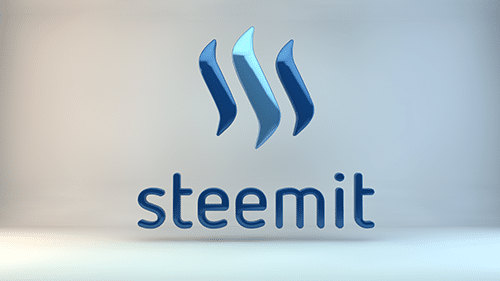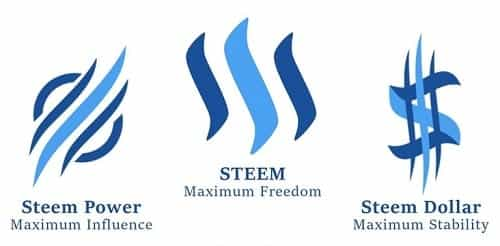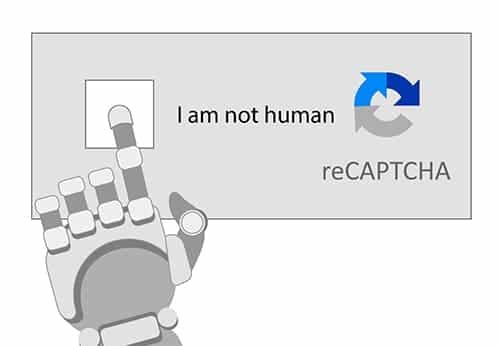Complete Guide to Using the Steemit Platform to Earn Steem
Cryptocurrencies are becoming prevalent in many different areas of industry, especially where technology is used, but there is one cryptocurrency that is more concerned with simple communication. That cryptocurrency is known as Steem, and the communication platform is a Reddit-like social media site known as Steemit.
Steemit was launched in July 2016 and was created by Ned Scott and Dan Larimar (who also created the EOS and BitShares cryptocurrencies). The company is incorporated in New York and has its headquarters in Virginia. Mr. Larimar has departed the company to pursue new projects, while Mr. Scott remains the CEO of Steemit Inc.
Without further ado, let's jump right into it.
What is Steemit?

Steemit is a social media, social networking, and blogging site that is run on the Steem blockchain. Users of Steemit (known as Steemians) are rewarded with the cryptocurrencies Steem and the Steem Backed Dollar for posting their writings on any number of subjects.
The rewards come from other users when they ‘upvote’ the original post. Rewards can also come to comments on posts, as these can also be ‘upvoted’. The value of the upvote is dependent on the Steem Power of the person doing the voting.
One final method for obtaining rewards is through the actual voting process as 25% of the rewards for each post are distributed among those who upvoted the post. These rewards are known as curation rewards, and use a reverse-auction system to determine the curation reward of each upvote.
One attraction of Steemit is the ability to increase one’s Steem and Steem Backed Dollar holdings simply through writing and social networking. This type of mining is called Proof of Brain by the founders of Steemit and according to the Steem whitepaper is:
a voting system that leverages the wisdom of the crowd to assess the value of content and distribute tokens to it.
What is Steemit trying to acheive?
The goal of Steemit is to attract new users and retain existing users by rewarding them for contributions to the blockchain. It also looks to distribute tokens to a wider set of users, thus increasing the network effect of the blockchain. This decentralization and increasing network effect is one of the goals initially set out by the Steemit founders.
In addition to increasing the user base of Steemit itself, the Steem blockchain allows for the development of other dApps utilizing Steem's blockchain technology. So far there are a handful, including a Youtube clone called dTube, a Twitter close known as Zappl, and a 9gag clone called dMania. There is also an alternative Steemit user interface at Busy.com. All of these are connected to the Steem blockchain and the rewards for posting content on these sites comes from the same Steem reward pool.
The addition of dApps helps grow the userbase dramatically, and since the initial launch of Steemit, the Steemit Inc team has announced the creation of Smart Media Tokens, which are meant to “tokenize the internet” in the words of founder Ned Scott.
Introducing Smart Media Tokens

After seeing the growing success of Steemit and the related dApps that were created around the Steem blockchain, the Steemit Inc team came up with the idea of Smart Media Tokens (SMTs), and have been putting a good deal of their development efforts into making these SMTs a reality.
SMTs will allow anyone to create their own token using the Steem blockchain, and then incentivize their website users with payments from the Steem reward pool. So, for example, a forum owner could tie post voting and commenting on their own forum to a ‘Forum Coin’ token built on the Steem blockchain. This would incentivize the forum users to vote and comment, thus increasing the value of the information on the forum.
In short, it’s a new way for content creators and publishers to monetize their online content and communities, without being reliant on advertising. The SMT will give users an economic incentive to use and participate in online communities, benefiting both the publisher of the site, and all the users who get a share in the rewards. Rather than paying advertisers, the publishers will be paying their own users.
How does Steemit work
As mentioned above the Steemit site is built on the Steem blockchain, which was created to incentivize content creation online. In fact, the whitepaper states that the reward system of Steemit is:
a pool of tokens dedicated to incentivizing content creation and curation (called the "rewards pool").
People get confused with Steemit rewards however, because the blockchain actually has three different ways in which currency is presented.
The root currency is Steem, a fungible, transferable token similar to the more familiar Ethereum or Bitcoin. However this is where the confusion begins because that Steem can be put into two other smart contracts, depending on what utility the user is looking for.
The first is called Steem Power, and it is this smart contract that powers the blockchain. It provides bandwidth for transaction verification, as well as determining the voting power, and thus the influence of the person on Steemit. Steem Power was created to encourage long-term interest in Steemit by users, and can be considered as an investment into the platform.
One other notable feature of Steem Power is that to convert it to Steem takes 13 weeks in a process known as “powering down”. This keeps the supply of Steem Power stable as there is decreased interest in powering down simply because of price spikes in the value of Steem.
The second smart contract is called Steem Backed Dollars (SBD). It is a debt instrument that promises to always be worth $1 of Steem. That is, a user can always trade SBD for $1 of Steem. Interestingly, despite this $1 peg, the SBD traded as high as $14 in December 2017 and is still worth more than $2 on the open market in March 2018.
How are Steem and SBDs Earned?

There are currently several ways in which Steem and SBDs can be earned. The most prevalent at this time is still by posting written content on Steemit. These blog posts are then voted on by other Steemit users, which results in eventual payments.
It should be noted at this point that posts on Steemit take 7 days to payout. They can be upvoted and generate revenue for the port author all during this 7 day window. Once the 7 day point is reached the posts payout, and further upvotes do not generate income. The post payout is also split 75/25 between the post author and those who voted on the post, known as curators.
Which brings us to the second way to earn on Steemit, which is through curation.
Curation payments are made based on upvotes to other posts, where 25% of the post value gets paid to upvoters. The ideal situation is to upvote a post before anyone else, and then see the post become extremely popular and valuable. As Steemit has grown larger this has become increasingly difficult.
New users have found that it is often easiest to earn Steem and SBD by simply writing thoughtful or useful comments on other people’s posts. Comments can also be upvoted and receive rewards. Good comments can be rewarded with high value upvotes, and it is often easier to earn this way for those who haven’t built an audience yet.
A final way to earn Steem and SBD is by participating in contests and challenges. These have been gaining in popularity as a way for those new to Steemit to gain some modest amounts of Steem and SBD. Generally the payouts are 15 SBD or less, making this most useful to those new to the Steemit platform.
And while writing on Steemit is still the most popular way to earn, there are new platforms built on the Steem blockchain that allow content creators to earn from video (dTube), songs (dSound), memes (dMania), and Twitter-like posts (Zappl).
How much Earnings are Possible?
If you look at the trending posts on Steemit you might see some posts with earnings in excess of $1,000. So, now you know what earnings are possible, but that isn’t realistic. Those earnings are typically reserved for those who have been on Steemit since the beginning, or in some cases those who have invested large amounts of money into the platform.
For the new user earnings could remain $0 for several weeks, although that’s extreme. If you’re interacting on other people’s posts (leaving comments and upvotes) it’s likely you’ll start getting some votes on your own posts within a few days. And of course you’ll often receive earnings from the comments you leave on others posts.
In reality I wouldn’t expect to earn much from your efforts on Steemit for at least several months, and in most cases it will be a year or more until you see significant progress and earnings. Of course this will vary from person to person and will depend on factors such as what you write about, your ability to network with others, your time commitment to using Steemit, your investment into the platform, and other factors that are often beyond your control.
Growth and Future Prospects
Steemit began in March 2016, but the tokens weren’t officially distributed until July 4, 2016. This marks the launch of Steemit, and since then the platform has grown at an organic rate of roughly 20% monthly. This is almost strictly by word of mouth, and by March 2018 the platform had nearly 900,000 users as well as an Alexa rank of 963, making it one of the most visited sites in the world.
The addition of sites such as d.tube and Zappl have increased user signups for Steemit as well, which indicates growth could increase throughout 2018.
One thing holding Steemit back is the manual account approval process. This has meant that some users have to wait weeks for an account to be approved. As we all know, by the time you wait two weeks, the initial enthusiasm for a project has likely worn off, and it is quite likely that Steemit is losing users because of these delays. The development team claims automatic signups are coming, and until they do this will continue to hinder growth.
As for the tokens, after SBDs hit a high above $14.00 in mid-December 2017, they have since dropped to near the $2 mark. Steem has seen a similar drop, coming from above $7 in mid-December to just above $2 in March 2018. Of course this coincided with a sharp drop in all cryptocurrencies, and it’s worth noting that on days that the overall market recovered, Steem was recovering even faster.
The upcoming Smart Media Tokens could provide the additional boost Steemit needs to grow well beyond a million users. It will open up the possibility for multiple portals and types of websites using the Steem blockchain to incentivize user interaction. More importantly for Steem is that all of these new tokens will use the Steem blockchain, and will need Steem Power, which will need to be purchased using Steem.
This could dramatically increase the demand for Steem, assuming adoption of the Smart Media Tokens occurs as planned. Steemit Inc. has hinted that there are several large web portals already planning on using SMTs when they launch in late 2018.
Steemit Competitors

There is little in the way of serious competition for Steemit at this time. It is the only functional blockchain based social media site, and with 2 years already in operation it has a very good first mover advantage.
The senior management at BitShares recently announced that they were developing a competitor called Yoyow.org, but it is still in development and is likely to remain concentrated on Chinese (and possibly Asian) social media users. Steemit does have a small Chinese userbase, but it is a small portion of total usage.
Two other potential competitors are Synereo, which is in closed beta and Akasha, which remains in alpha testing and isn’t expected to launch until sometime in late 2018.
One other notable potential competitor could come from the NEO blockchain. Steemit co-founder Dan Larimer, the brains behind the creation of the Steem blockchain, recently left Steemit Inc under bad terms and has said he will create a Steemit competitor on the NEO blockchain. Whether this is real or a fit of pique is yet to be seen.
Downsides of Steemit

While Steemit looks like a pretty good platform, all is not perfect in the Steemland. There are some negatives that should be explored before investing in this utility token.
With the growth in the price of the Steem and SBD token also came a host of spammy users. Mostly people who felt it was OK to simply post little value plagiarized content, whether than was an article, a picture, or some video. This type of plagiarism is against the spirit of Steemit and against its rules.
It provides no added value, but was taking away from the reward pool because these people would have sometimes dozens of accounts created simply to vote on the spammy content and collect rewards. Some of these were even bots…and speaking of bots.
Currently the Steem ecosystem is overrun with voting bots. These are accounts created specifically to accept payment for their votes…in some cases huge votes. In just 4 months the number of bid-bots has grown from roughly 20 to nearly 100. And these bots provide a service, but really they too are just taking from the reward pool. Typically the return from the bot to the user is negative, and the bot still collects the SBD or Steem. At the rate things are going Steem will soon be little more than bots.
You’d think that with these negatives there would be some response from the top, right?
Well, Steemit Inc. has made no move to stop or even condemn any of this, preferring to allow the user base to deal with the issues. That is happening in some cases – there are accounts specifically to combat spam and plagiarism, and there are individual users who have taken it upon themselves to combat the abuse of the reward pool.
Sometimes this turns into a bad thing however, because of the ability to flag a post rather than upvote it. A flag takes the rewards away from the post, and some of the largest users on Steemit have been quite flagrant in flagging whatever and whomever they feel goes against their purposes.
And there’s the final issue. Even though Steemit is meant to be decentralized, the fact of the matter is that roughly 65% of the voting power lies in the hands of less than 100 accounts. In many cases these were the early adopters of the platform, who were able to amass 100s of thousands of Steem before the platform became more popular. And in some cases these are users who simply bought their way to the top when the price of Steem was a penny.
The problem is that many of these accounts do not act in the best interests of the Steemit platform, but rather in their own best interests, and this selfishness could ultimately be the downfall of the entire ecosystem.
In Conclusion
I hope this guide to the social media site Steemit has been helpful for you, whether you’re looking to be an investor in Steem or a content creator on the platform. As you can see, there are both positives and negatives to the platform, and those already invested are hoping that the positives win out.
One thing that can be said about the current centralization is that it is slowly dissipating as new users join the platform. It can only be hoped that enough stay around after seeing the ugly sire of Steemit.
With enough new users these problems will sort themselves out, and this is almost certainly why Steemit Inc remains on the sidelines so to speak. The whitepaper itself speaks of the platform needing large numbers of people to make the decentralized proof of brain concept work properly, and perhaps 2 years hasn’t been long enough for the site to reach its true potential.
It does continue to grow however, and this bodes well for the future, especially with little competition on the horizon, and the possibility of large existing websites adopting the Smart Media Tokens once the technology for them is complete.
Disclaimer: These are the writer’s opinions and should not be considered investment advice. Readers should do their own research.
